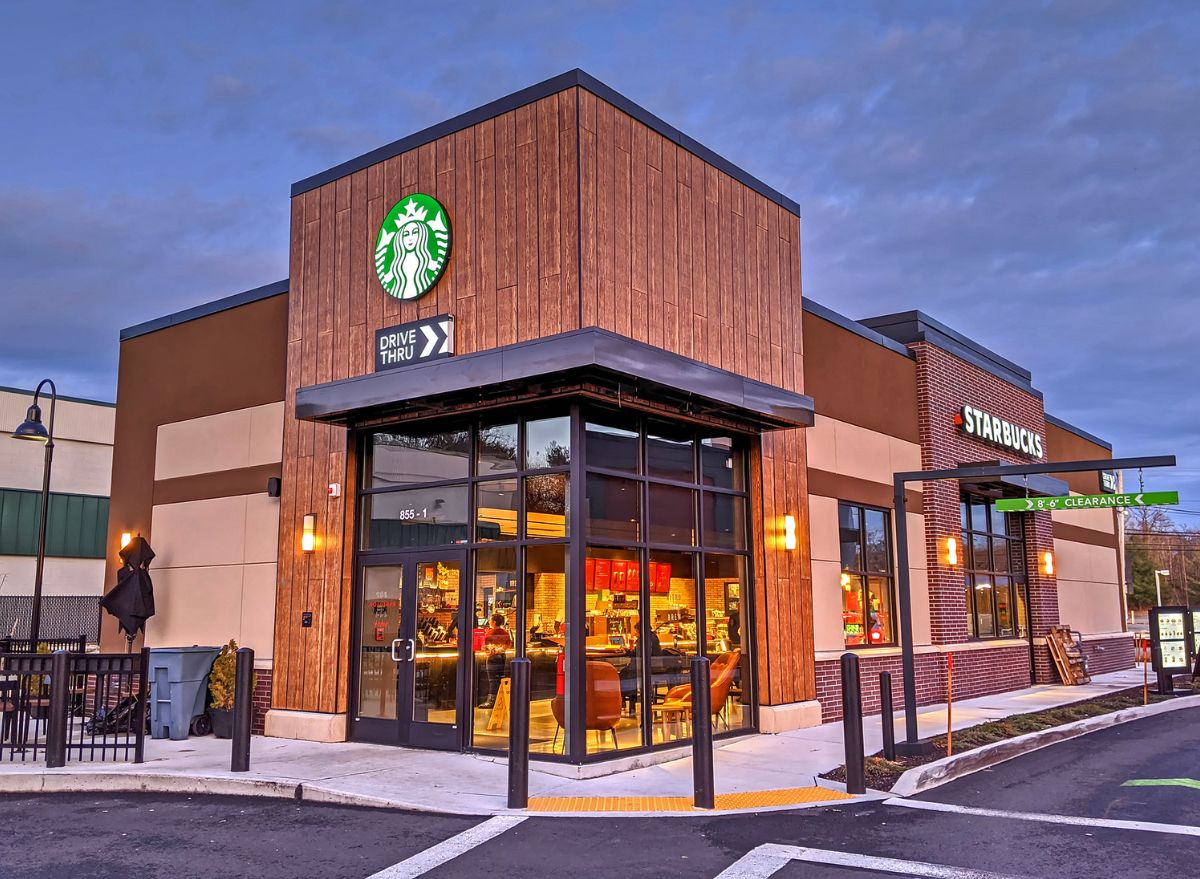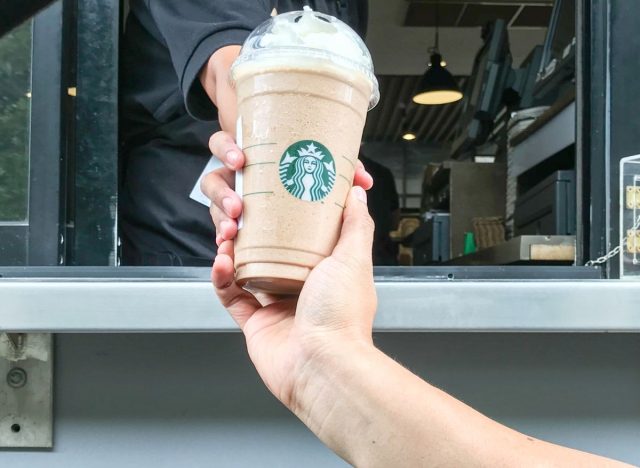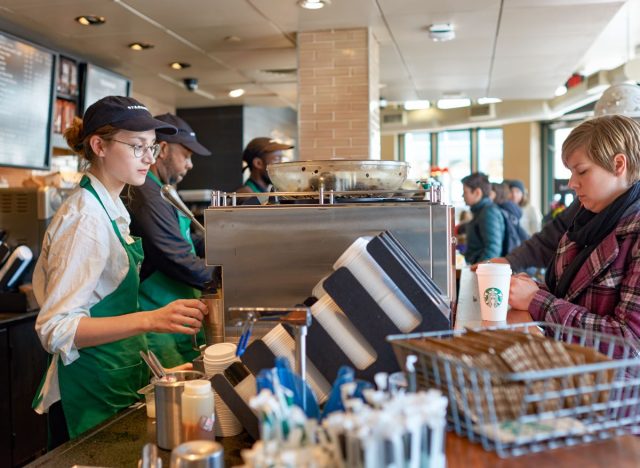Why Starbucks Wait Times Are Skyrocketing Right Now

If you've recently found yourself waiting longer than usual for your go-to Starbucks drink, you're far from alone in that experience. Customer wait times at the coffee giant have been on the rise, according to a May 29 report from Bloomberg. Several anonymous employees told the publication that workers have been struggling to keep up with the onslaught of in-person, drive-thru, mobile, and delivery orders that pile up qucikly. As a result, guests aren't getting their drinks and snacks as quickly as they did in the past.
Bloomberg, citing data from the industry research firm Technomic, reported that about 8% of customers waited between 15 and 30 minutes for their orders last quarter. For comparison, almost no customers waited that long during the same time period in 2019. The portion of guests who wait between five and 15 minutes for their orders has also increased from 20% in 2019 to 31% in 2024.

The Technomic data does show that a majority of Starbucks customers (59%) still wait less than five minutes for their orders. Still, that's notably lower than the 80% of guests who waited less than five minutes for their orders in 2019.
The anonymous employees alleged that understaffing is to blame for this trend of longer wait times. They claimed that while some locations had five or so employees working at a time about a year ago, only three or four might be working right now.
The employees also suggested that Starbucks' scheduling algorithm is at least partially to blame for the alleged understaffing. Starbucks says that its staffing model takes a variety of factors into account—such as historical sales, tasks that need to be completed, planned promotions, current trends, and the types of foods and beverages they're offering—to forecast how many workers are needed throughout each day.
But the anonymous employees told Bloomberg that they don't believe this model accurately predicts how much time employees need to fill customized orders that call for extra espresso shots or cold foam. They also claimed that the model doesn't accurately consider the impact that promotional deals have on customer traffic.

In a lengthy blog post this week, Starbucks sought to counter many of the claims highlighted in the Bloomberg report.
"A recent Bloomberg story on staffing, scheduling and wait times at Starbucks lacks vital context and draws misleading conclusions based on a small sample of solicited conversations," it read. "Despite providing extensive information to Bloomberg, including multiple interviews, and detailed progress of our work to improve the partner and customer experience, the story includes sweeping generalizations made about our more than 16,000 U.S. stores and 200,000 U.S. store partners."
Bloomberg said that Starbucks' staffing model uses an "array of inputs" like order forecasts and product availability "to spit out a recommended staffing plan." In response, the chain said that Bloomberg's description "oversimplifies" how the algorithm actually works.
"Order forecasts and product availability are just two elements of a sophisticated and complex algorithm that also factors in current trends, planned promotions and other inputs from local store leaders now better equipped for store-level decision making," the blog post read.
Starbucks said it has been striving to increase employee hours in response to worker feedback. The chain also said it provides scheduling guidance and adds more hours to support workers during promotions when possible. Plus, it has been testing new solutions "that make it easier to staff our stores and build great schedules."
Hopefully, these efforts will translate to a better experience for any Starbucks customers who've been affected by longer wait times.









